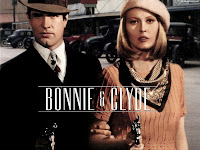- Steve and Jenny meet after work
- They travel to Steve's favourite location a scenic abandoned quarry to spend the weekend there
- They are harassed by a group of teenagers
- Conflict between the young couple and the teenagers occurs and Bret's (the 'leader' of the group) dog is killed
- Bret wants revenge and chases them , the couple drive off but crash their car , Jenny goes to get help since Steve is trapped.
- Steve is gone when Jenny returns
- The teenagers torture Steve , Jenny rescues and hides him as she once again goes for help
- The teenagers capture both Jenny and Steve , Steve has died she escapes
- Jenny finally reaches the road and gets help from a stranger who gets out the car to look for his brother
- She drives off thinking she will be caught again
- Jenny crashes the car in the Bret's father's garden but doesn't realise
- The parents of the teenagers force Jenny into the bathroom and the film cuts to black
In the film Eden Lake there are significant binary opposites throughout. The main characters are a young couple named Steve and Jenny. The couple are what the audience would refer to as the 'good' characters due to their innocent and friendly appearance , this is later reinforced when they are attacked in the woods by a gang of youths. They're constantly trying to defend themselves from violent teenagers. The fact that they need to defend themselves from them shows that the teenagers are the opposite of the couple the 'bad' characters. The gang are out of control , violent and controlling. They try there best to prevent the couple from leaving the forest and often take things to far.
Cultural codes play a vital part in the film , it helps the audience relate to issues currently happening around them in their own lives. It uses typical representations from the British culture to show the British horror genre. In the film a few members of the gang carry around with them a knife/blade , this is bringing up the issue that in reality knives are often associated with gangs. There is peer pressure present throughout the film. Bret seems to be the leader of the gang , he often forces younger members of the group to do unpleasant things they don't want to be part of. If they disagree or refuse he threatens them , this results in them giving up and doing what he says. James Watkins the director gives the teenagers a extremely negative representation , in the film the youths travel in gangs and harass others around them. There loud , rude and inconsiderate towards the couple causing tension between them from the start.
Enigma codes are used to make the audience want to keep watching , they want to know whats going to happen even if they aren't particularly enjoying the film. In Eden Lake various questions the viewer could think are 'will the young couple escape?' , 'why are the teenagers doing this?' , 'who is the little boy?' , 'will she live?'. This film is successful in that as a viewer I wanted to know what was going to happen even though I wasn't really enjoying the film.
Eden lake is what people would call a paranoid horror , as the ending is left for the viewer to decide what happens. Although the way Watkins ends it , it influences the viewers decision as to what happens.
In most horror films , women tend to play the 'damsel in distress' and are often stereotyped as helpless , weak and scared. However in Eden Lake the role is reversed where Jenny becomes a completely different person compared to her previous self at the beginning of the film. At the exposition of the film Jenny is seen as innocent and caring , gradually as the teenagers disrupt her weekend away more and more she grows into stronger character. As a viewer we see her physically change as she becomes covered in mud , blood and other things. Steve is in-fact the weaker character constantly needing help throughout.
There is an idea of class throughout the film , we an see that the teenager's are from a working class background due to the way they dress and behave towards the couple. The teenagers and the couple are opposites to each other and this is what makes the film more realistic as the couple are in the teenagers area now.



